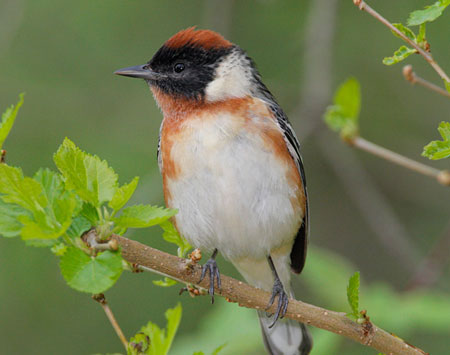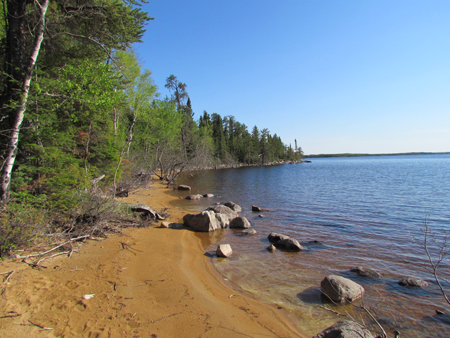The following is a guest post from Alan Young of the Canadian Boreal Initiative (CBI). CBI brings together diverse partners to create new solutions for boreal forest conservation and works as a catalyst supporting on-the-ground efforts across the boreal. Hope you enjoy the read.

Manitoba's boreal is at the heart of the declining Bay-Breasted Warbler's range
Credit: Jeff Wells
Think you’ve been seeing fewer songbirds in your back yard over the past couple years? Chances are you’re not alone. A recent landmark report on the state of Canada’s bird populations found that 44 percent of Canada’s bird species are in decline, 66 of which are listed as Endangered, Threatened or of Special Concern.
As some have pointed out, it’s not all doom-and-gloom. Two major bird groups, waterfowl and raptors, have both increased over the past forty years. This is largely due to the success of international wetland conservation and restoration efforts and, in the case of raptors, successful legislative efforts to ban harmful chemicals such as DDT.
However, there is no denying that unless we address the two main threats to Canada’s birds—habitat degradation and climate change—we are unlikely to see this concerning trend cease.
Manitoba is in a great position to address both of these issues. With a relatively small population and a plethora of land and resources, Manitoba has the capital and space to invest in renewable energy projects helping to mitigate the production of greenhouse gases that contribute to climate change. This abundance of land, at least to the north in the boreal forest, is also highly intact. In fact, Manitoba shares with Ontario the single largest intact stretch of forest left on earth. So to say that Manitoba possesses abundant opportunities for large-scale bird conservation would be an understatement.
While curbing climate change will surely take an international effort, protecting important bird habitat from further degradation is entirely within Manitoba’s control. And there’s no better place to start than the boreal forest.

Intact boreal forest in northern Manitoba
Credit: Jeff Wells
Eighty percent of Manitoba’s 467 000 km² boreal forest is still in relatively pristine condition. No large clear-cuts, no dams, no habitat-bisecting roads. Between 100 to 300 million birds breed there in the summer, and countless millions more stop to feed and rest along their migratory routes to and from habitat further north. It’s also home to the iconic yet threatened woodland caribou and nearly 50 aboriginal communities, some of which still heavily rely on traditional forms of sustenance. And with 19 billion tonnes of carbon stored in our forest—equivalent to 94 years of Canada’s annual carbon emissions—it is safe to say that not just birds benefit from boreal conservation.
The course Manitoba appears to have set with its actions and published intentions indicates recognition of this important opportunity and of a responsibility to steward the boreal wisely. Manitoba has rightfully placed the creation of the Pimachiowin Aki proposed World Heritage Site as a high priority. I have visited the vast and lush region and can say I’ve seen few places and cultures as worthy of protection.
I read Manitoba’s new draft green plan with interest, and although it lacked specifics in terms of how it plans to sustainably manage and protect the boreal, its language and commitment is encouraging. With these areas in play, I see no reason to believe Manitoba cannot one day boast of being a world leader in boreal conservation and appropriate development.
Olive-sided Flycatcher in northern Manitoba
Credit: Jeff Wells
These efforts are all about thinking long-term: once a forest is cleared, it remains altered forever.
One-hundred years from now, will we be the generation remembered as the first to truly address our ever-expanding footprint on nature? Or will we be remembered as the ones who knew all too well of the consequences and yet stood idly by?
Manitoba has a real, concrete opportunity to be remembered by the former rather than the latter. If it is, we can remain confident there will still be a few birds left for our future generations to enjoy.

